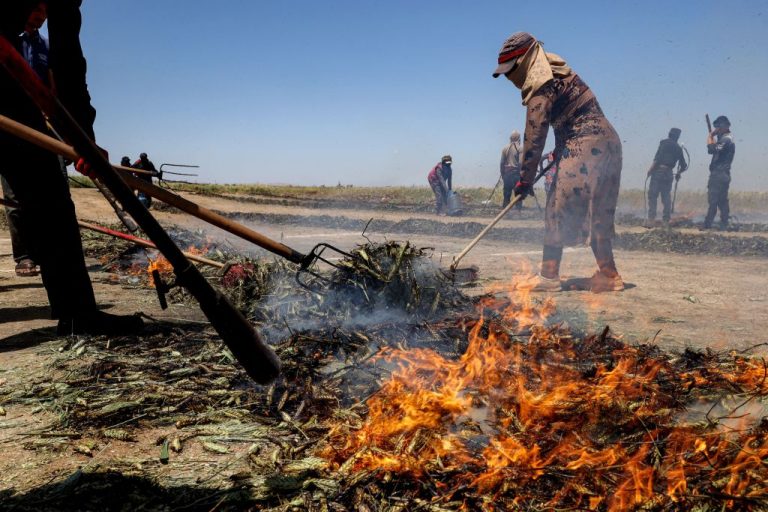The world only has ten weeks of wheat supplies remaining in inventory, the CEO of a data analytics company told the United Nations almost a week and a half ago.
Reported by outlets such as Business Insider as far back as May 21, CEO of Gro Intelligence, Sara Menker, gave the United Nations Security Council an FYI on the dire situation on May 19.
“We currently only have 10 weeks of global consumption sitting in inventory around the world,” she told the Council, adding, “Conditions today are worse than those experienced in 2007 and 2008.”
Although the veracity of Menker’s comments rely on the accuracy of her firm’s analytics, the executive was gutsy enough to buck the Council’s trend of blaming the Russian Federation’s war in Ukraine.
MORE ON ECONOMY AND FOOD CRISIS
- Oil Used in Oreos and Toothpaste Becomes 10% More Expensive After Indonesia Bans Exports
- First Time Shoplifters On the Rise as Inflation Runs Wild
- Diesel Now $10 a Gallon in Canada
Menker opened her comments before the world’s top diplomats by stating, “I want to start by explicitly saying that the Russia-Ukraine war did not start a food security crisis. It simply added fuel to a fire that was long burning.”
Success
You are now signed up for our newsletter
Success
Check your email to complete sign up
Her comments certainly piqued attention, “A crisis we detected tremors from long before the COVID-19 pandemic exposed the fragility of our supply chains.”
“I share this because we believe it is important for you all to understand that even if you were to end the war tomorrow, our food security problem isn’t going away any time soon without concerted action,” she added.
Menker additionally stated that her firm’s analytics estimate that rising food prices have made an additional 400 million people worldwide “food insecure.”
And continued, “It is important to note that the lowest grain inventory levels the world has ever seen are now occurring while access to fertilizers is highly constrained.”
The CEO also told the UN, “Drought in wheat growing regions around the world is the most extreme it’s been in over 20 years. Similar inventory concerns also apply to corn and other grains.”
No good news
Perhaps the data publicly available on Gro’s own website can shed light on the nature of Menker’s claims.
An April 26 article referencing a seemingly hopeful forecast by Statistics Canada that the country’s wheat production would actually grow 6.7 percent year over year revealed a sombering caveat.
“Severe drought last year caused Canadian spring wheat production to plunge 38%, which helped lead to today’s tightness in global wheat supplies,” it stated.
And indeed, during last summer some parts of Canada’s westernmost province of British Columbia saw temperatures exceed the all time highs posted in Las Vegas, Nevada, when they hit 49.6 C (121.28 F).
As a result, wheat and canola crops faced the brunt, with farmers stating by mid-July that they were already anticipating a loss of as much as 80 percent of their harvest.
Additionally, fruit crops and shellfish basins were decimated. Some video footage from an area off the coast of Vancouver Island showed the visible carcasses of countless forms of sea life strewn about after they cooked alive inside their shells from the unprecedented temperatures.
Gro noted, however, that fortunately, current moisture levels were actually better than last year. But on the other hand, the company stated that soil moisture levels were already on par with 2021’s levels.
April 5 analysis on the U.S. market failed to paint a brighter picture. Gro stated that its models are “pointing to a double-digit-percentage drop in production from last year.”
The projection is exceptionally notable in light of the fact that, “In 2021, drought pushed production of the main variety, hard red spring wheat, down 44% year over year to its lowest level in more than 30 years.”
USDA confirmation
Although the United States Department of Agriculture’s (USDA) global projections are substantially more rosy, a dive into the details confirms the stated trend.
The USDA’s May Grain: World Markets and Trade circular forecast global wheat production at 775 million tonnes, down only 4 million from 2021.
The missive noted, however, that Ukraine is expected to produce a crop yield of only 1/3rd its usual size as a result of less farmland available due to the war with Russia.
However, the USDA noted its forecast’s optimism relied on things going well in Canada, “The largest year-over-year growth in production is expected in Canada, where area and yield are both forecast higher on improved weather following last year’s widespread drought.”
The Department’s optimism further relies on increased production for Russia, Kazakhstan, Turkey, and the United States itself.
The USDA also revealed that global exporter-held stocks, which are available worldwide to buyers, are the lowest since the 2012-2013 season, with Russia, the EU, and Australian stocks all falling.
By comparison, Canada’s stocks “are forecast to only increase minimally and remain historically tight,” the document stated.
Pointedly, the Circular stated that China’s stocks are close to the highest they’ve ever been, although they do not sell to the rest of the world.
Based on data that the USDA appeared to gather from the ruling Chinese Communist Party, China has more grain in hand than the rest of the world combined, a trend that has persisted since the 2019-2020 season.
The Circular also confirmed Menker’s statements on rising food prices, as it noted that global consumption was projected to fall 3 million tons, but still exceed production at 788 million.
Foods Seed and Industrial (FSI) consumption, however, was projected to again hit a new all time high on the back of increased demand from China and Africa, as well as the European Union as it struggles to feed Ukraine’s refugees.
“High global food inflation will impact consumers’ ability to purchase wheat and wheat products in developing markets and may direct consumers to alternative food grains,” the document stated.
The document noted that the U.S. futures market was projected to hit an all time high of a staggering $10.75 per bushel, which has more than tripled from last year’s $3.05 per bushel.
















